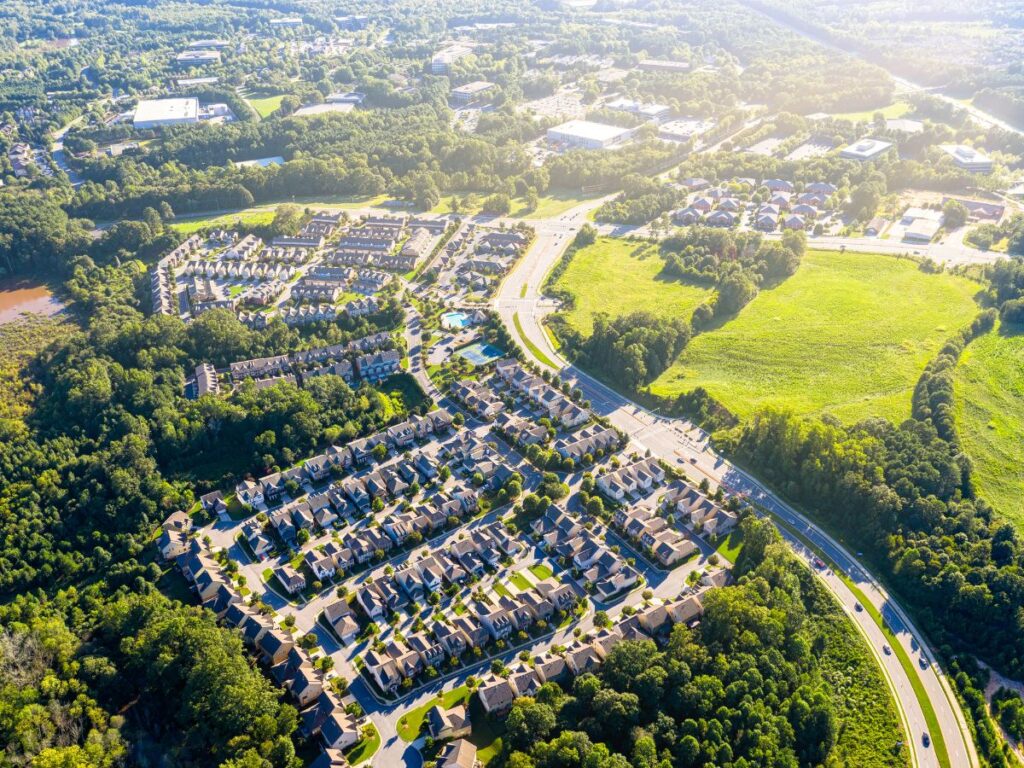
Page Contents
Non-recourse financing secured by project cash flows, not sponsor assets
Tiered capital structure combining senior debt (50-70%), mezzanine (15-25%), and equity (15-30%)
Strict pre-financing requirements including 50-70% pre-leasing and 35%+ sponsor equity
Securing financing for landmark real estate developments requires more than standard loans.
For projects crossing the $250M threshold, sponsors enter the realm of structured project finance – where capital stacks are engineered around cash flows rather than balance sheets.
This guide explains the financing options available for commercial, residential, and mixed-use projects valued at $250 million and above.
Understanding Real Estate Project Finance
Real estate project finance refers to non-recourse or limited-recourse financing where repayment depends primarily on a property’s cash flow rather than the developer’s balance sheet.1 This approach enables:
- Financing for projects too large for conventional loans
- Risk allocation among multiple stakeholders
- Longer loan terms (10-30 years) compared to traditional financing

Financing Options by Project Type
Commercial Developments
Office towers, shopping centers, industrial parks
- Debt Solutions:
- Construction loans (short-term)
- CMBS financing (5-10 year terms)
- Bridge loans for value-add projects
- Equity Sources:
- Joint ventures with institutional investors
- Private equity real estate funds
Residential Communities
High-rise condos, multifamily complexes
- Debt Solutions:
- Agency loans (Fannie Mae/Freddie Mac)
- Construction-permanent financing
- Equity Strategies:
- EB-5 immigrant investor programs
- Real estate crowdfunding platforms
Mixed-Use Projects
Combined retail/office/residential developments
- Structured Finance Approaches:
- Mezzanine debt layers
- Tax increment financing (TIF)
- Public-private partnerships

The Capital Stack for $250M+ Real Estate Developments
Financing large-scale developments requires carefully engineered capital stacks tailored to each asset class.2
Commercial Real Estate Development
Commercial projects like trophy offices anchor their financing with senior debt (50-65% LTV), often through CMBS or insurance companies.
This gets supplemented with mezzanine financing (15-25%) from private debt funds charging 8-12% interest, while the remaining 20-30% comes from sponsor equity and institutional JVs.
Manhattan’s Park Avenue Tower showcased this model in its $1.2B refinancing, blending traditional debt with preferred equity.
Residential Real Estate Development
Residential high-rises take a phased approach. Construction loans demand 35-40% equity during lease-up, later refinanced through agency programs.
In prime markets, EB-5 capital can cover 20-30% of equity needs, as seen in recent San Francisco towers.3
Mixed-Use Development
Mixed-use complexes require the most innovation.4 Miami Worldcenter’s $750M financing combined:
- 55% senior debt
- 20% mezzanine
- 15% EB-5/TIF incentives
- 10% sponsor equity
Lenders now mandate 50-70% pre-leasing for commercial projects and 12-24 months of interest reserves.
Sponsors should expect to contribute 35% equity for ground-up developments.
Securing $250M+ for Large-Scale Developments
For developers and sponsors undertaking landmark projects, securing financing above $250 million demands specialized knowledge of structured capital solutions.
Unlike conventional real estate loans, project finance for mega-developments requires careful planning across three critical phases.
Phase 1: Capital Preparation (Months 1-3)
The foundation begins with rigorous feasibility analysis. Top-tier lenders now expect:
- Market studies demonstrating absorption rates
- Construction cost verification from multiple bids
- Environmental and zoning compliance reports
During this stage, developers typically:
- Issue RFPs to 5-7 potential lending partners
- Begin preliminary discussions with equity providers
- Finalize the capital stack strategy
Phase 2: Term Sheet Negotiation (Months 4-6)
With feasibility established, negotiations intensify around:
- Loan-to-Value Ratios: Typically capped at 65% for senior debt
- Pre-Leasing Requirements: Often 50%+ for commercial projects
- Interest Reserves: Minimum 12 months coverage standard
- Equity Commitments: 35% minimum for ground-up developments
This phase frequently involves:
- 60-90 day exclusivity periods with lead lenders
- Parallel negotiations with mezzanine debt providers
- Structuring tax incentive packages where applicable
Phase 3: Financial Close (Months 7-12)
The final stretch includes:
- Due Diligence Completion
- Appraisal validation
- Lease audits for stabilized assets
- Construction contract reviews
- Documentation Finalization
- Loan agreements (200+ pages typically)
- Intercreditor agreements
- Equity partnership terms
- Financing Initiation
- Initial draw for land acquisition
- Subsequent tranches tied to construction milestones
Current Market Requirements
Today’s lenders demand:
- Strong Sponsorship: Proven track record in similar projects
- Pre-Leasing Proof: Signed LOIs from anchor tenants
- Rate Protection: Swaps or caps for floating-rate debt
- Equity Verification: Liquid assets beyond project commitment
For mixed-use developments, additional layers like:
- TIF district approvals
- EB-5 capital integration
- PPP arrangements

Three Non-Negotiables for Sponsors
- Pre-Lease Hurdles – Lenders now demand 50-70% pre-leasing for office/retail before releasing construction draws
- Interest Rate Reserves – Most term sheets now include 12-24 months of rate hedge funding
- Equity Sequencing – First-in capital often comes with waterfall preferences that impact junior partners
The current climate favors sponsors with:
- Entitled land positions
- Anchor tenant MOUs
- Construction cost guarantees
While debt funds have tightened leverage to 55-60% LTV for ground-up deals, insurance companies are aggressively pursuing stabilized assets at sub-5% coupons.
The bifurcation creates opportunities for developers who can bridge the gap with creative capital solutions.
Conclusion
Large-scale real estate financing requires careful planning and expert guidance. By understanding the various capital sources and structuring options, project sponsors can successfully fund developments that transform skylines and communities.
For developers seeking financing solutions, consulting with experienced capital advisors is recommended to navigate this complex process.
REFERENCES:
- CFI, Real Estate Project Finance, retrieved from https://corporatefinanceinstitute.com/resources/commercial-real-estate/real-estate-project-finance/
- JPM, Understanding the real estate capital stack, retrieved from https://www.jpmorgan.com/insights/real-estate/commercial-term-lending/what-is-a-capital-stack-in-real-estate
- U.S. Citizenship and Immigration Services, EB5 Immigrant Investor Pilot Program, retriewed from https://www.uscis.gov/sites/default/files/document/presentations/EB-5%20Investor%20Pilot%20Program.pdf
- PwC, “Real Estate 2030: Financing the Future”, retrieved from https://www.pwc.com/gx/en/industries/financial-services/asset-management/real-estate.html
